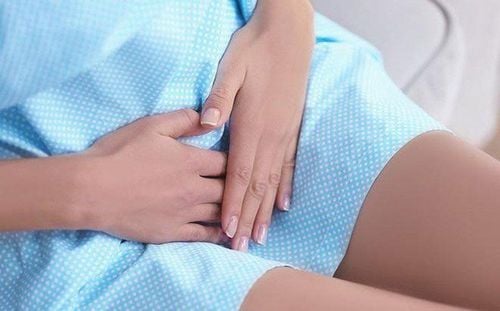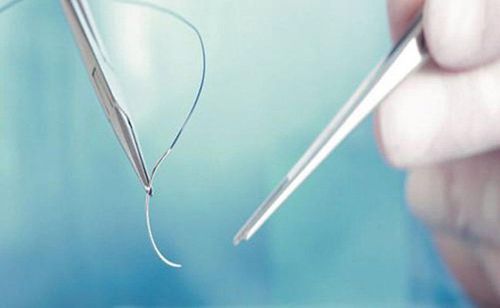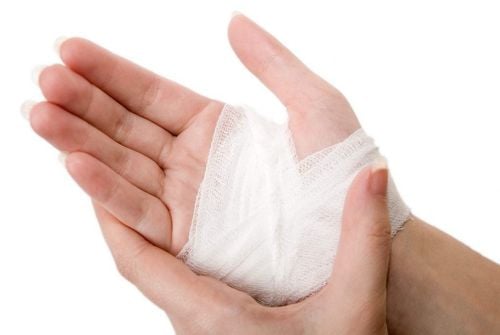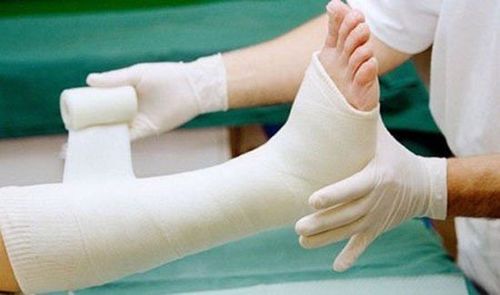This is an automatically translated article.
Sutures are used by surgeons to close open wounds in the skin or other tissues. When suturing the wound, people use a needle attached to the tip of the thread to suture the wound. There are many different types of materials used in sutures. Depending on the condition of the wound and the type of surgery, the doctor will choose the type of suture with the appropriate material and diameter.
1. Classification of wound sutures
Wound sutures are classified according to many methods. First, the material of the suture is classified as standard and non-absorbable. The standard does not need to be cut, the enzymes in the body's tissues will break down the thread by itself. The undigested thread needs to be removed from the body after a few days, but in some cases, the undigested thread will be left on forever.
The second method is that the material of the suture is classified according to the actual structure of the material. Monofilament suture is a single-stranded suture with the advantage of easily stitching through tissues, in addition, because it is a single thread, it does not contain infectious organisms.
Braided suture: this is a braided structure made of many small monofilament yarns woven together, with the advantage of being easier to handle than monofilament, more pliable and more durable than monofilament. The downside of this thread is that it tends to absorb fluids, leading to an increased susceptibility to infection.
The third method is classification based on natural or synthetic materials. However, since all suture materials are sterilized, this difference is not specific.
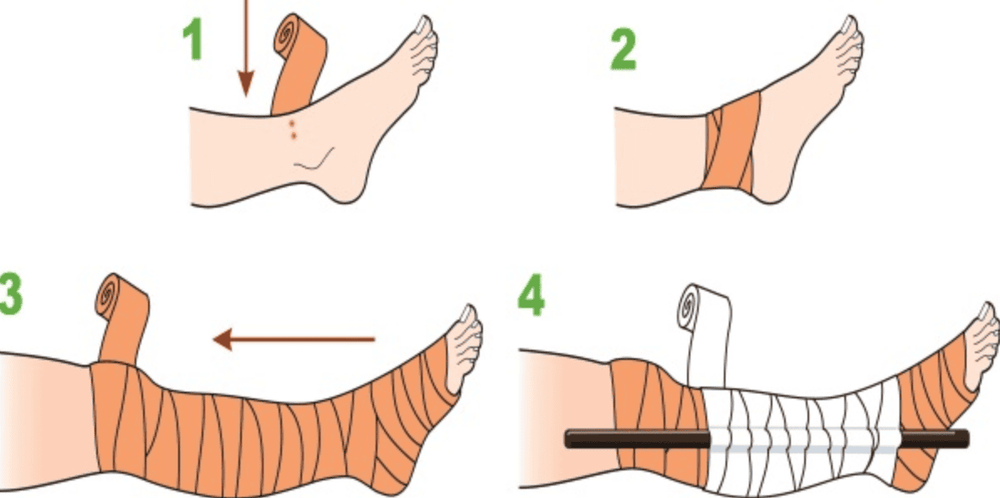
Khâu vết thương là bước quan trọng để tránh nhiễm trùng vết thương
2. Classification of self-absorbable thread
Only gut. This naturally derived monofilament suture is used for internal soft tissue wounds or lacerations. Gout thread should not be used in neurosurgery or cardiovascular surgery. Often the body reacts the most to this type of thread and often leaves a scar. Gout thread is not commonly used outside of gynecological surgery. Only Polydioxanone (PDS). This synthetic monofilament suture can be used in many soft tissue closure procedures (such as laparotomy) as well as pediatric cardiac surgery. Poliglecaprone (MONOCRYL) only. Synthetic monofilament sutures are commonly used to suture soft tissue injuries This material is not recommended for neurosurgery or cardiovascular surgery. This type of thread is most commonly used to close the skin in a concealed suture manner. Polyglactin (Vicryl) only. This synthetic braid is great for hand or facial lacerations, but should not be used for neurosurgery or cardiovascular surgery.
3. Classification of non-digestible thread
Some types of undigested thread are listed below. These sutures can be commonly used to close soft tissue injuries, including in neurosurgery and cardiology.
Only Nylon. Single thread of natural origin. Only Polypropylene (Prolene). Synthetic monofilament thread. Silk Silk Only. Braided yarn of natural origin. Polyester thread (Ethibond). Synthetic braided yarn only.
4. Sewing method and corresponding thread type
Sewing threads are classified according to the diameter of the thread. The grading system uses the letter O before a number to indicate the material diameter. The higher the number, the smaller the diameter of the stitch. The suture is connected to a needle, which comes in a variety of shapes, with or without a cutting edge. Larger needles can close more tissue with each stitch while smaller needles are better able to reduce scar formation.
The variety of suture types to meet the requirements of stitching technique as well as the position to be sewn. Common stitching techniques include:
Continuous stitch
This technique consists of a series of stitches using a single thread to stitch. The stitch is placed quickly and strongly, as the tension is evenly distributed throughout the continuous stitch.
Loose stitch
This technique uses multiple suture threads to close the wound. After a stitch is placed, the thread is knotted and cut. This technique allows the wound to be closed securely, because if one of the stitches comes loose, the remaining stitches will still keep the edges of the wound together.
Sewing in the skin (the knot is buried)
This stitching technique is applied so that the knot of the thread is inside (under or in the area where the stitch is closed). This technique usually requires no suture and is useful for large sutures located deep in the body.
Pocket stitch
This continuous stitch technique places the stitch around a section and tightens like a drawstring on the bag. This technique is used for bowel surgery to hold the automatic stapling device in place.
Subcutaneous suture
In this technique, stitches are placed in the dermis. Short stitches are placed in a straight line parallel to your wound. Stitches are then anchored at the ends of the wound.
Depending on the type of wound and the type of thread as well as the type of thread used, the thread cutting time is different. The surgeon will inform the patient about the time of re-examination and suture removal after the wound is closed.
5. Thread trimming time
This is the recommended thread removal time corresponding to the sutured sites, however, the thread removal time depends on the condition of the wound as well as other factors such as risk of infection:
Oily skin wounds : 7 to 10 days Facial wound: 3 to 5 days Chest or upper body wound: 10 to 14 days Arm wound: 7 to 10 days Leg wound: 10 to 14 days Table wound hand or foot: 10 to 14 days Palm or sole wound: 14 to 21 days First, before the suture is removed, the doctor or nurse will clean the suture site. The knotted end of the stitch is then gently lifted as close to the skin as possible and cut away, leaving the remaining sutures drawn.
If you have unusual symptoms, you should be examined and consulted with a specialist.
Please dial HOTLINE for more information or register for an appointment HERE. Download MyVinmec app to make appointments faster and to manage your bookings easily.
Articles refer to the source: healthline.com




